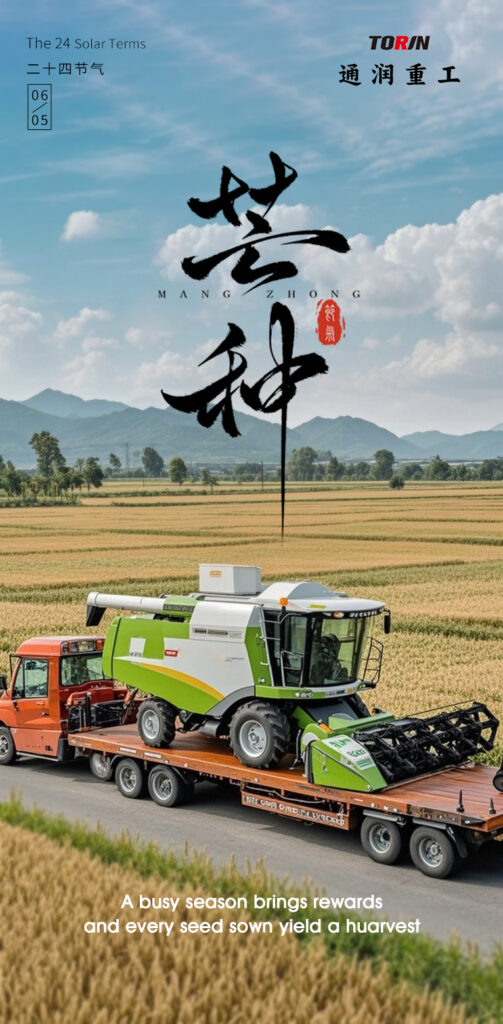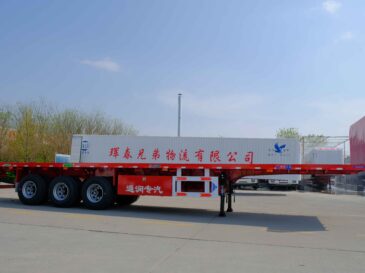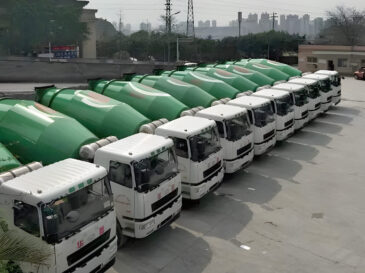Semi-trailers, the backbone of the modern logistics system, represent a completely different logic of civilization. These steel behemoths run on the highway day and night, transporting a variety of goods from electronic products to fresh fruits and vegetables. The time of semi-trailers is a logistics schedule accurate to the minute, the optimal route calculation under GPS navigation, and the modern business promise of "on-time delivery". They constitute the blood network of China's manufacturing powerhouse and support the efficient operation of the "world factory". According to statistics, China's annual production of semi-trailers has accounted for more than 60% of the world's total, and the total amount of goods transported by these vehicles each year exceeds 10 billion tons, becoming one of the most symbolic tools in China's industrialization process.
The encounter between Grain in Ear and semi-trailers occurred in the historical process of urban-rural integration in contemporary China. Every year around Grain in Ear, we can see such an intriguing scene: beside the rice fields in the south of the Yangtze River, when the rice-planting farmers raised their heads and wiped their sweat, they saw a fleet of semi-trailers flowing on the highway; and these semi-trailers may be transporting hybrid rice seeds to be exported to Southeast Asia, or modern greenhouse equipment imported from the Netherlands. What is even more thought-provoking is that many semi-trailer drivers may themselves be the sons of farmers. During the busy farming season, they will temporarily put down the steering wheel and go home to help their parents rush to harvest and plant. This identity switch has become a vivid footnote to the mobility of contemporary Chinese society.
On a deeper level, the dialogue between Grain in Ear and semi-trailers reflects the complementarity and integration of two civilizations. Modern agriculture is no longer purely traditional farming. In the fields during the Grain in Ear season, high-tech equipment such as unmanned rice transplanters and intelligent irrigation systems are becoming popular. Most of these equipment are transported to the fields by semi-trailers. At the same time, the agricultural products transported by semi-trailers are no longer simple raw materials, but commodities that have gone through cold chain logistics and brand packaging, and their value chain extends to the Internet sales platform. The concept of "making crops in season" in traditional farming wisdom has evolved into sensors and data analysis for precision agriculture in modern agriculture; and the industrialized thinking represented by semi-trailers is also learning the seasonal laws of agriculture and optimizing the allocation of logistics resources.
This integration is creating a new Chinese-style modernization narrative. In some modern agricultural parks in Zhejiang, agricultural activities during the Grain in Ear season have been given new connotations of cultural tourism experience, where urban tourists can learn to plant rice and visit modern agricultural product processing workshops. In Shandong's logistics base, semi-trailer drivers are learning to use water-saving irrigation technology from Israel to better transport fresh agricultural products. These phenomena show that China is embarking on a development path different from the Western industrialization path - not completely replacing agriculture with industry, but allowing the two civilizations to nourish each other and evolve together.


Innovative design solves the problem of heavy transportation on tropical islands Recently, TIRON successfully delivered a tropical gooseneck low-bed semi-trailer…

–Customized solutions help construction Recently, the last batch of special low-bed semi-trailers with a load capacity of 85 tons completed…

In November 2024, Tongrun Heavy Industries announced that it had entered into a cooperation with the well-known X Construction Company…